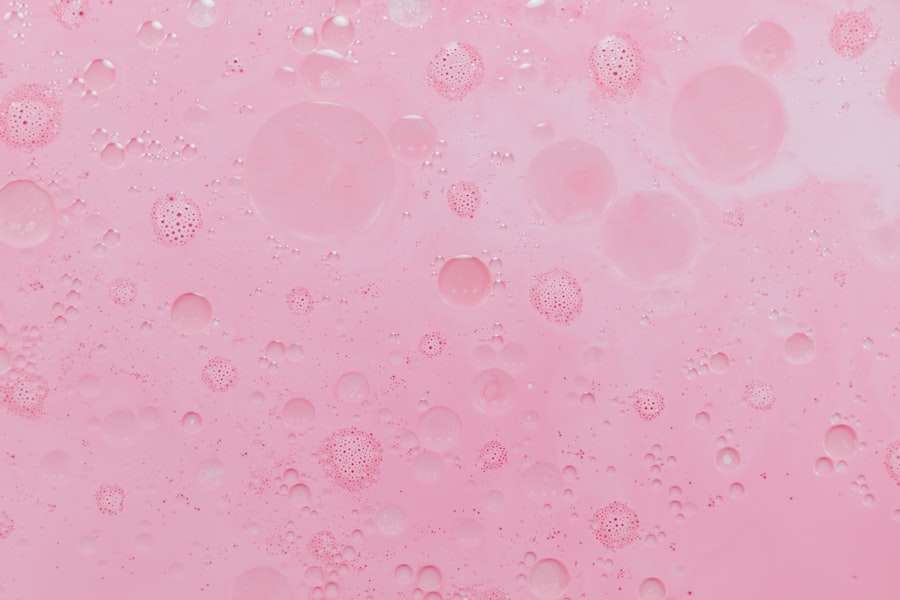Exploring Purple Symbolism: From Royalty to Spirituality

Purple is a color that has captivated humans for centuries. Its rich and vibrant hue has been associated with power, royalty, spirituality, and creativity. Throughout history, purple has held a special place in various cultures and societies, symbolizing prestige and nobility. From ancient times to modern day, the color purple has played a significant role in art, fashion, spirituality, and even technology. In this article, we will explore the history, symbolism, psychology, and cultural significance of purple, as well as its presence in nature and its healing properties.
The History of Purple: From Ancient Times to Modern Day
The origins of purple dye can be traced back to ancient civilizations such as the Phoenicians and the Minoans. These cultures discovered a way to extract a vibrant purple dye from the glands of certain sea snails found in the Mediterranean Sea. The process of obtaining this dye was labor-intensive and expensive, making purple a color that was reserved for the elite.
Purple held great significance in religious and political contexts throughout history. In ancient Rome, for example, purple was associated with emperors and high-ranking officials. The Roman Emperor Nero even passed a law that made it a crime for anyone other than the emperor to wear purple clothing. Similarly, in ancient Egypt, purple was considered a sacred color associated with royalty and divinity.
In modern times, the availability of purple dye has increased significantly due to synthetic production methods. This has made purple more accessible to the general population. Purple is now commonly used in various industries such as fashion, interior design, and advertising.
The Symbolism of Royalty: Purple as a Sign of Power and Prestige
Purple has long been associated with royalty and nobility. This association can be traced back to ancient times when purple dye was rare and expensive to obtain. The scarcity of purple made it a symbol of wealth and power.
Throughout history, purple has been used in royal ceremonies and regalia. For example, in the British monarchy, purple is often seen in the robes and accessories worn by members of the royal family during important events such as coronations and weddings. The color purple is also commonly associated with kings and queens in fairy tales and folklore.
The symbolism of purple as a sign of power and prestige continues to endure in modern times. Purple is often used in branding and marketing to convey a sense of luxury and sophistication. Many high-end fashion brands incorporate purple into their logos and packaging to appeal to a discerning clientele.
The Spiritual Significance of Purple: Exploring the Mystical Meanings
Purple has deep spiritual significance in many cultures and religions. In Christianity, purple is associated with Lent and Advent, representing penance, preparation, and royalty. In Hinduism, purple is associated with the crown chakra, which is believed to be the center of higher consciousness and spiritual connection.
Purple is also often associated with mysticism and spirituality. It is believed to enhance intuition, psychic abilities, and spiritual awareness. Many people use purple in meditation practices to deepen their connection to the divine.
Purple in Art: A Color of Inspiration for Artists Throughout the Ages
Artists throughout history have been inspired by the color purple. From the vibrant purple robes worn by royalty in Renaissance paintings to the dreamy lavender fields depicted by Impressionist artists, purple has been used to evoke a sense of beauty, mystery, and spirituality.
One famous example of purple in art is Vincent van Gogh’s “Starry Night.” The painting features a swirling night sky filled with shades of blue and purple, creating a sense of enchantment and otherworldliness. Another example is Henri Matisse’s “The Purple Robe,” which showcases a woman draped in a flowing purple garment, exuding elegance and grace.
The emotional and psychological impact of purple in art is profound. Purple is often associated with creativity, imagination, and spirituality. It can evoke feelings of calmness, introspection, and inspiration.
The Psychology of Purple: Understanding the Effects of Color on the Mind

The color purple has a unique psychological impact on the human mind. It is often associated with qualities such as creativity, wisdom, and spirituality. Purple is believed to stimulate the imagination and encourage deep thinking.
In color therapy and healing, purple is used to promote balance and harmony. It is believed to have a calming effect on the mind and can help alleviate stress and anxiety. Purple is also associated with intuition and spiritual growth.
The impact of purple on mood and behavior can vary depending on the shade and intensity of the color. Lighter shades of purple, such as lavender, are often associated with tranquility and relaxation, while darker shades, such as deep violet, can evoke a sense of mystery and introspection.
The Cultural Significance of Purple: How Different Societies Interpret the Color
Purple holds different cultural significance in various parts of the world. In Western cultures, purple is often associated with royalty and nobility. In Eastern cultures, such as China and Japan, purple is associated with spirituality and enlightenment.
In some African cultures, purple is considered a color of mourning and is worn during funerals. In Native American cultures, purple is associated with healing and spiritual ceremonies.
The meaning of purple can also vary within a culture or society. For example, in the LGBTQ+ community, purple has been used as a symbol of pride and solidarity.
Purple in Fashion: From Runway to Everyday
Purple has been a popular color in fashion throughout history. In ancient times, purple was reserved for royalty and nobility due to its rarity and expense. Today, purple is widely available and can be found in various shades and styles.
Purple is often seen on fashion runways, with designers incorporating the color into their collections to add a touch of luxury and sophistication. Purple is also a popular choice for formal wear, such as evening gowns and tuxedos.
For those looking to incorporate purple into their everyday wardrobe, there are many options available. From purple accessories such as scarves and handbags to purple statement pieces like dresses or suits, there are endless ways to incorporate this vibrant color into your personal style.
Purple in Nature: Discovering the Natural Wonders of Purple Flowers and Landscapes
Nature is full of beautiful examples of the color purple. From delicate lavender fields in Provence, France, to vibrant purple orchids in tropical rainforests, purple can be found in various flowers and landscapes around the world.
Purple flowers are often associated with beauty, grace, and elegance. Some examples of purple flowers include lavender, lilacs, irises, and violets. These flowers are often used in floral arrangements and gardens to add a pop of color and create a sense of tranquility.
The symbolism of purple in nature is often associated with spirituality and transformation. Purple is believed to represent the connection between the physical and spiritual realms.
The Healing Properties of Purple: Exploring the Benefits of Purple Gemstones and Crystals
Purple gemstones and crystals have long been used in healing practices. Amethyst, for example, is a popular purple stone that is believed to have calming and protective properties. It is often used to alleviate stress, promote relaxation, and enhance spiritual awareness.
Other purple stones such as charoite, sugilite, and lepidolite are also believed to have healing properties. These stones are often used in crystal therapy to balance the mind, body, and spirit.
Incorporating purple stones into your daily life can be as simple as wearing them as jewelry or placing them in your living space. Many people also use purple stones during meditation or energy healing practices.
The Future of Purple: Trends and Innovations in the World of Purple Symbolism
As society continues to evolve, so does the symbolism and use of the color purple. Emerging trends in the use of purple can be seen in various industries, such as technology and design. Purple is often used in branding and marketing to convey a sense of innovation, creativity, and luxury.
Innovations in purple technology and design are also on the rise. For example, purple LED lights are becoming increasingly popular for their energy efficiency and versatility. Purple is also being used in interior design to create unique and vibrant spaces.
The future of purple as a symbol of power, spirituality, and creativity looks promising. As our understanding of color psychology and symbolism deepens, we can expect to see new and innovative uses of purple in various aspects of our lives.
Purple has a rich and fascinating history that spans across cultures and centuries. From its origins as a rare and expensive dye to its modern-day presence in art, fashion, spirituality, and technology, purple continues to captivate and inspire us.
The symbolism of purple as a color of power, prestige, spirituality, and creativity is deeply ingrained in our collective consciousness. Whether it’s the regal robes worn by kings and queens or the calming properties of amethyst crystals, purple holds a special place in our hearts and minds.
As we continue to explore the world of color symbolism and psychology, it is clear that purple will remain a vibrant and influential color for years to come. Its enduring appeal lies in its ability to evoke emotions, spark creativity, and connect us to something greater than ourselves. So let us embrace the beauty and significance of purple in all its forms and continue to be inspired by this extraordinary color.
If you’re interested in exploring the symbolism of purple, you might also enjoy reading about the symbolism of the sun. The sun holds great significance in various cultures and is often associated with power, vitality, and enlightenment. To delve deeper into this topic, check out this fascinating article on symbolismhub.com. It’s always intriguing to uncover the hidden meanings behind different symbols and colors, so why not expand your knowledge by exploring related articles like this one?
FAQs
What is purple symbolism?
Purple symbolism refers to the use of the color purple to represent certain ideas, emotions, or concepts in various cultures and contexts.
What does the color purple symbolize?
The color purple is often associated with royalty, luxury, power, and wealth. It can also symbolize creativity, spirituality, and wisdom. In some cultures, purple is also associated with mourning and death.
What are some examples of purple symbolism in art and literature?
In art and literature, purple is often used to symbolize royalty and power. For example, in William Shakespeare’s play “Macbeth,” the character of Lady Macbeth wears a purple robe to symbolize her ambition and desire for power. In the painting “The Arnolfini Portrait” by Jan van Eyck, the woman is wearing a purple dress to symbolize her wealth and status.
What is the significance of purple in religion?
In Christianity, purple is often used during the season of Lent to symbolize penance, humility, and sorrow. It is also used during Advent to symbolize preparation and anticipation for the coming of Christ. In Judaism, purple is associated with royalty and is used to symbolize the majesty of God.
What is the history of purple symbolism?
Purple has been a symbol of royalty and power since ancient times. In ancient Rome, only the emperor was allowed to wear purple clothing. In ancient Egypt, purple was associated with the god Osiris and was used to symbolize his power and authority. In medieval Europe, purple was a symbol of wealth and status, and was often used in the clothing of nobles and royalty.





